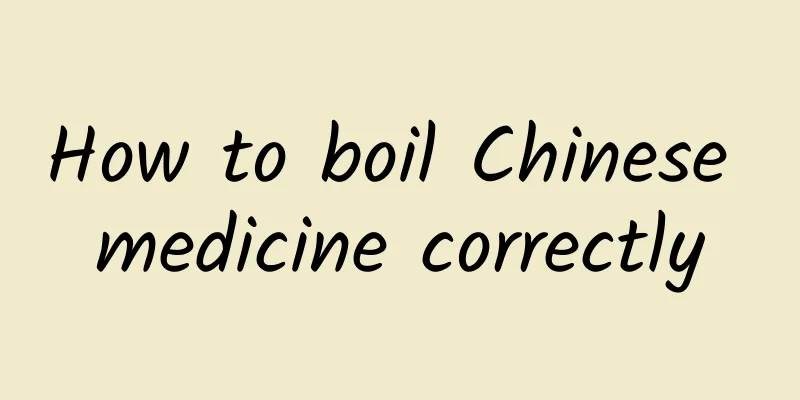What causes breast pain after menstruation?

|
Breast pain is relatively common among women. Premenstrual breast pain can be physiological or pathological. Physiologically, breast pain is caused by increased estrogen secretion and breast fullness after menstruation. Pathological breast pain is often caused by breast hyperplasia. Breast pain caused by breast hyperplasia is mostly related to emotions. Next, let’s take a closer look at what exactly is causing breast pain after menstruation? Distending pain in the breast can be seen in both physiological and pathological situations. Common physiological breast distending pains include: distending pain during puberty, premenstrual pain, pregnancy pain, postpartum pain and pain after artificial abortion, but most physiological breast distending pains are related to emotional tension. If breast pain persists or even becomes more severe, or if you find a lump with irregular shape, unclear edges, and poor mobility when touching your breast, you should go to the hospital for examination and treatment as soon as possible. Causes and common diseases 1. Pathological (1) Breast hyperplasia: The main cause of the disease is endocrine hormone imbalance. Breast tissue is very sensitive to hormones, and breast tenderness is often the first symptom that patients with breast hyperplasia seek medical attention. Breast hyperplasia may be accompanied by breast lumps, menstrual disorders (delayed, scanty, light-colored menstruation), nipple discharge, emotional changes (bad temper, irritability, mental tension), etc. Therefore, normal breast pain should be distinguished from breast hyperplasia to avoid delaying treatment. (2) Mastitis: Mastitis is divided into lactation mastitis and non-lactation mastitis. Common acute mastitis often occurs in lactating women, especially primiparas. It is an acute breast inflammation caused by bacterial infection during lactation, with typical symptoms of local redness, swelling, heat and pain. Symptoms such as chills, fever, fatigue, and loss of appetite may occur throughout the body. If a breast abscess forms, fluid levels can be seen on ultrasound and pus can be drawn out by puncture. (3) Breast cancer: Breast cancer mostly occurs in women between 40 and 60 years old, and the incidence rate is higher in women before and after menopause. Early breast cancer is often painless, while painful breast cancer often indicates advanced stage. Studies have shown that the detection rate of breast cancer will increase in postmenopausal women who experience breast pain accompanied by gland thickening. Of course, when the tumor is accompanied by inflammation, there may also be swelling or tenderness. If the advanced tumor invades the nerves or the axillary lymph nodes compress or invade the brachial plexus, shoulder pain may occur. Breast cancer is also accompanied by breast lumps, nipple discharge, nipple changes, skin changes, and swollen axillary lymph nodes. 2. Physiological (1) Breast pain during adolescence: During adolescence, breast development begins with nipple swelling, followed by the appearance of pea- to bean-sized dome-shaped nodules in the breast tissue under the nipple, which are slightly painful. After menarche, it will disappear on its own as the breasts mature. (2) Premenstrual breast pain: More than half of women experience breast fullness, hardness, and tenderness before menstruation. In severe cases, the breasts may become swollen and painful even with the slightest vibration or collision, and the original granular or nodular feeling may become more obvious. Generally, the pain is relieved after menstruation. (3) Breast tenderness and pain during pregnancy: Some women experience breast tenderness and pain around 40 days after becoming pregnant due to breast hyperplasia and enlarged breasts. In severe cases, the pain may last throughout the pregnancy. (4) Postpartum breast pain: Breast fullness, hardness, and pain may often occur 3 to 7 days after delivery. (5) Breast tenderness after induced abortion: After induced abortion, some women complain of breast tenderness and may feel a lump. (6) Breast tenderness and pain after sexual intercourse: Breast congestion and swelling are not easy to subside, or subside incompletely, resulting in breast tenderness and pain. |
>>: Left side breast pain under armpit
Recommend
Symptoms and causes of fever
Fever is a common symptom. There are many reasons...
How to prevent sexually transmitted diseases, 6 ways to prevent
Sexually transmitted diseases are contagious. The...
What are the methods of treating acne in traditional Chinese medicine?
Acne is common in our lives. Although it is not a...
What are the symptoms of brain tumor edema?
In fact, brain tumor edema mainly refers to the e...
How to relieve liver fire
In daily life, some people are always prone to &q...
Malignant thyroid tumor
There are many common diseases in life. When trea...
What to eat to get your period the fastest
Menstruation is a normal physiological phenomenon...
The correct way to apply hot towel to nose
Applying a hot towel to the nose is a common heal...
What are the symptoms of excessive body moisture?
Excessive moisture in the body can cause us to fe...
How vein valves repair themselves
Abnormal venous valves are an important cause of ...
Motor neurone disease treatment
When motor neuron disease occurs, some of your li...
How to solve acid reflux quickly
Many people experience acid reflux in their daily ...
How long should I take Jinkui Shenqi Pills before I stop taking them?
Based on the Shenqi Pills invented by Zhang Zhong...
Lower eye socket pain, more painful when pressing
There are many possible reasons why the pain in t...
The skin suddenly feels like it's being pricked by needles
I don’t know if you have ever experienced this. S...









